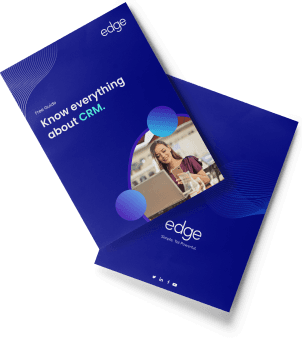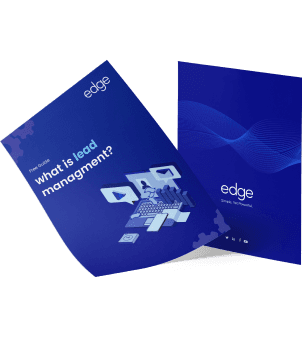Every day, millions of consumers receive emails about their interests, purchases they made, articles, recommendations and the likes. What stands out is the relevance of these emails. They are designed to cater to your needs, engage you in activities. Brands use this communication technique to connect to their consumers on a personal level thus, leading to an increase in sales.
What is Drip Marketing?
Drip marketing is a meticulously planned communication strategy that spans over a period of time to keep users engaged. These messages include details about the products or services and aim at increasing the conversion rate of a prospective buyer into a consumer.
These messages, which usually includes features of the product/services, are designed based on the behaviour pattern of the prospects. Such behaviour pattern includes the amount of time spent on the website, interest in a product or if the consumer has signed up for an account, among many others. Drip marketing campaigns bring the consumers closer to the products/services one step at a time.
According to research by email-marketing suite Emma, drip marketing, if done right, has shown to increase the revenue by 18 times than globally broadcasted emails. In addition, the research also states that these emails are likely to get a 119% increase in click rate. What makes drip marketing a success?
Drip campaigns are customised based on each individual’s opinions, likes and interests. It gives them the right information at the right time, making them relevant and personalised. These marketing strategies take into account human behaviour and work on triggers such as signing up on the website, subscribing to blogs, registering for online stores. In addition, it also takes into account the time duration throughout which the prospects need to be kept hooked through various engagement emails such as cart abandonment, customer review messages, recommendations, et al.
Advantages of Drip Marketing
Increased engagement: Marketing campaigns based on users’ interests and actions fetch better results than generic emails. These emails keep the consumers hooked and even waiting for more.
Automated: These emails are pre-written and automated based on consumer preferences. If carefully planned, they can lead to higher conversions and increased revenue. This also saves a lot of time and effort as it minimises the chances for manual intervention.
Happy consumers: These emails have a lesser chance to disinterest a consumer for their personalised nature. Proper follow-up also allows to board more consumers and surpass sales targets.
Better sales: Drip marketing campaigns also can engage consumers after the purchase has been made. For example, emails can be composed to urge consumers to visit the site and buy something related to the previous purchase or renew the premium subscription of a streaming site. This leads to the constant engagement of the consumers with the brand.
Brand recall: Irrespective of the buying behaviour of the consumer, if your campaigns are designed according to the consumer’s tastes, they will stay with them for the longest time. If the need for a product or a service ever arises, the consumer will think of you first and will come back to make a purchase.
Types of drip emails
Lead Nurturing drips: These emails introduce the consumers to the product and services offered by the brand, their specific features and what makes them stand out compared to the other brands. Subscription-based services also offer free trials to get the consumers to become a part of the sales funnel.
Welcome drips: These emails introduce the brand to its consumers, welcoming them to be a part of their esteemed clientele. These emails contain information about the brand, products, services and things that consumers might find interesting.
Onboarding: These emails are the next step to convert prospects into buyers. These emails are designed to coax users to invest in products or services by offering enticing offers, posing them as a solution to the problems and how is it going to make their life easier.
Abandoned shopping carts: These emails serve as a reminder for the customers to make a purchase. This set of emails also includes recommendation emails where the consumers can look for related products and buy them. These emails include messages such as availability of the products, or a number of products available in the stock for making the purchase or renewal messages from subscription-based platforms.
Follow-up drips: These includes follow-up emails regarding the purchases made, customer feedback forms, review messages et al to keep the consumers constantly engaged with the brand.
How to set up drip campaigns
Drip campaigns should address the following to engage their leads and convert them into buyers.
Highlight the problem relevant to your lead and create an urgency for a solution.
Follow-up with how using the products and services offered by you can help them deal with the problem.
The next email must appeal to the consumer’s ability to reason. These emails should logically highlight why the product/service is the best solution to the consumer’s problems. This must also include analysis, comparisons and user reviews.
The next email can appeal to the emotions of the consumers, such as fear. Fear is one such emotion. Leverage it to instil fear among your consumers, stating the perks they will lose out on if they don’t buy your product or signup for your services.
Once the prospect has been successfully converted into a buyer, sending follow-up emails to check for grievances, concerns or questions is a good practice to keep them engaged with the brand, increase brand recall value and bring them back for future purchases.
Things to consider while setting up drip campaigns
Target audience: Drip campaigns include pre-written automated email which requires recognising and breaking the subscriber’s list into different groups and sending them the relevant information.
Message: Establish what action do you want the consumers to take and design the message accordingly. The message should be clear, actionable and attractive while reflecting the brand values.
Campaign plan: The plan from start to finish of the campaign should be well thought off, leaving no chances for loopholes. Measurement metrics should be in place to check the campaign results.
Evaluation and adjustment: After setting up the campaign, segments should be thoroughly researched, and responses should be monitored to adjust the campaign. This can include re-writing messages, retargeting leads, add more layers of communication to convert prospects to buyers. This process must be repeated constantly to generate better results.
Various Customer Relationship Management (CRM) tools are available in the market, such as edge CRM to categorise, add, delete leads from the list to help you create a personalised list to send relevant messages. In addition, various measurement metrics can help you read your buyer behaviours and analyse campaign performances. The key to great communication lies in the details, relevance, clarity and attractiveness of messages. Engage your customer at all steps to show that you care for them, their needs and take them along to the journey of fulfilment. Drip marketing will help one land consumers who are happy, would come back for a second purchase and recommend o to their friends, family and acquaintances thus, creating for you better sales opportunity.













